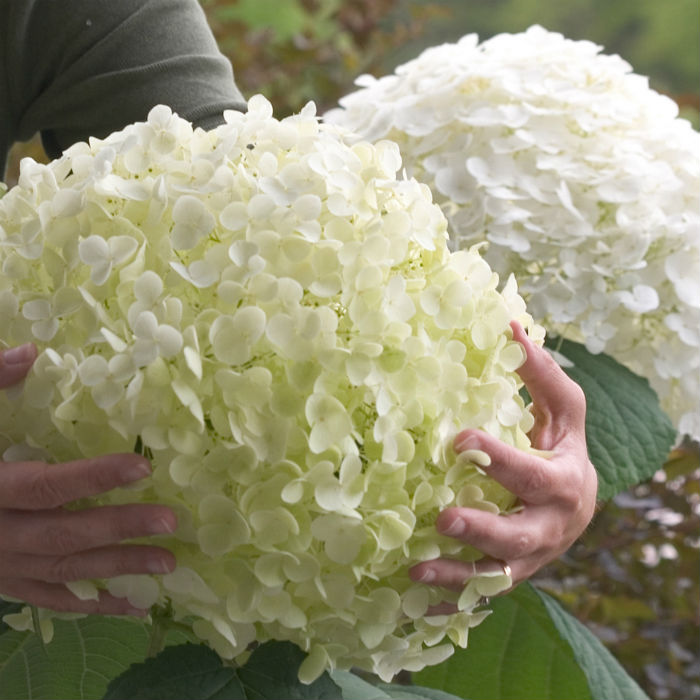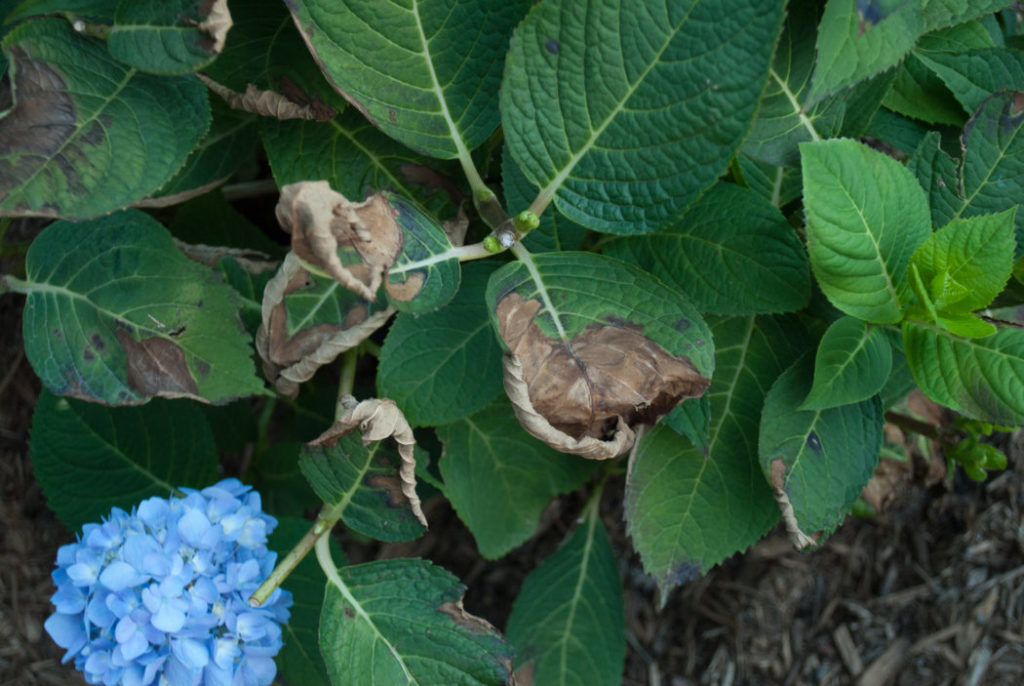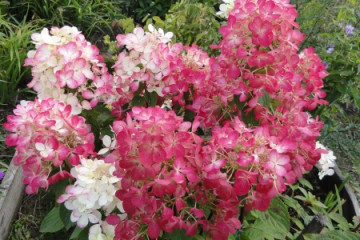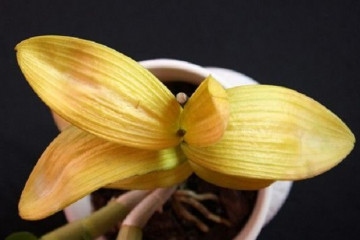Why does hydrangea have pale leaves - how to feed?
Content:
Garden hydrangea, easy to plant and care for in the open field, is a beautiful and vibrant plant. It will certainly decorate any garden and will become a bright (or white) spot in the composition. It happens that the green leaves of a flower turn yellow or turn pale, lose their bright saturated color. Why does hydrangea have pale leaves?
There are winter-hardy varieties and indoor varieties, each of them needs to be looked after in its own way. The plant can be small or create a whole hedge; winter-hardy specimens are suitable for this.
If it is noticed that the hydrangea has pale green leaves, then it is important to know what to do:
- it is necessary to water regularly;
- observance of the level of acidity of the soil and its maintenance are important, so in multi-colored varieties you can adjust the shades of inflorescences;
- the quality and fertility of the soil in which the hydrangea grows are important;
- regular fertilization for good plant development;
- in hot regions, the shrub should be planted in partial shade;
- pruning regularly;
- observe the temperature regime and shelter for the winter in cold regions.
The yellowing of the foliage of the hydrangea in the country speaks of the plant's poor health. At the same time, they can turn white, dry, become dark, veins of a different color appear. The problem should be identified and corrected.
How to feed if hydrangea leaves brighten
First of all, you should feed the plant, because if the leaves turn white, then, most likely, the hydrangea lacks nutrients. Throughout the growing season, you should regularly use mineral fertilizers twice a month and organic once a month.
What does hydrangea love
Garden hydrangea loves pruning, planting and care in the open field are not difficult at the same time. The flower is responsive to abundant watering, but it leads to the leaching of nutrients from the soil. In this regard, the plant should be fertilized regularly. The most favorite "delicacy" of the shrub is nitrogen. It will help preserve greenery, form large and beautiful inflorescences, and also prolong flowering.
The best option for saturating the soil with nitrogen is to use slurry, which should be diluted with water in a proportion of 1 part of manure and 10 parts of water. Then pour the bush with the composition.
Potassium and phosphorus are necessary during the period of bud formation, therefore, at this time, superphosphate or other complex fertilizer containing these elements is best suited for feeding.
Feeding hydrangeas with kefir
Sometimes plant feeding is carried out with very unusual folk compositions. Kefir or yogurt can give lactic acid for a plant. Whey or fermented baked milk can replace them.
You need to know how to properly feed a hydrangea bush with kefir: for this, dilute 2 liters of a fermented milk product in 10 liters of water. Before using the solution, you should first water the bush so that the soil under the bush is moist.
What to put in the hole when planting hydrangeas
Despite the fact that the plant loves moisture very much, it does not tolerate its stagnation. Therefore, at the bottom of the hole for planting a shrub, drainage should be put, which will not allow excess moisture to accumulate at the roots. This applies not only to planting in a pot, but also to planting a plant in open ground.
Then you should water the plant with nitrogen, which will accelerate its growth and help increase the amount of young greenery. During the formation of buds, it is best to use phosphorus-potassium compounds, which will increase the size of future flowers and their number.
Also, do not deepen the roots of the plant too much when planting in a pot, use a vessel of sufficient size made of clay or ceramics. The hydrangea will not grow until it fills the entire flowerpot with root shoots.
Why do hydrangea leaves turn red
Reddening of the foliage of the bush can be associated with several factors of improper care. One of them is incorrect transplantation, when the roots of the plant are damaged. In this case, regular abundant watering and top dressing with the drug will be required for the formation and development of a strong root system.
Lack of nutrients or insufficient acidity can also cause the leaves to turn red. In this case, regular feeding three times a month with mineral compounds and organic fertilizers will help.
Why do hydrangea leaves turn black
Hydrangea leaves can turn black for several reasons, it is important to pay attention to all the nuances.
If the blackened leaves are dry, you should check:
- whether the sun has burned the plant;
- how hard water is used for irrigation, it is better to take rain or settled water.
When the leaves become lethargic, become covered with black spots, wither and crumble, this can mean:
- waterlogging of the soil;
- a sharp change in temperature;
- draft at the place of growth;
- poor soil (dry and heavy for the plant is not suitable).
After the reason is found out, you should start treatment, then fertilize the flower with a root method to support development.
How to save a garden hydrangea
There may be several reasons for the disease; the methods of salvation are not much different. If the shrub is burnt by the sun, then it should be removed from the light or transplanted into the shade, the same should be done when drafts are detected. Maintain a constant temperature and is easiest to handle when the plant is indoors. A bright shaded spot in the garden will also help achieve the desired result.
In case of excessive watering, urgently free the root system from waterlogged soil and replace it with fresh one. The same should be done if the soil in which the hydrangea is planted is heavy and does not allow air to pass through well.
If the hydrangea does not wake up in the spring
If the hydrangea does not wake up in the spring, what to do, simple tips and a small instruction will prompt. At the end of March - beginning of April, it should already be opened, it is enough to leave the mulched trunk circle. It is quite simple to check if the shrub is frozen, just cut off a few branches and see if they are alive or not. You can save the hydrangea by planting surviving roots.
Planting tree hydrangeas in open ground in spring is very effective. It is important to consider at what distance to plant hydrangeas from each other. Spring is a good time for plant propagation. In the Moscow region, preparation can begin in April. A healthy branch should be divided into cuttings of 5 buds and planted in wet soil by 2/3 of the size. Division will help the plant survive in uncomfortable conditions. This method can be used on a dying flower.
If it is determined that the hydrangea is alive, then you should help her wake up. Some drugs will help with this.:
- Epin should be applied to the root collar, if it is inaccessible, then you need to dig a little ground near the trunk;
- Zircon or Kornevin can be used as pathogens of root growth, for this it is enough to water one of them under the root (after spilling the soil with water);
- Regular watering with ordinary settled water will also help the plant wake up and revive the buds.
When all else fails, you can try pruning the branches, leaving a little more than 5 cm. This will help stimulate the plant to sprout from living roots.
Do I need to prune hydrangea for the winter
Many gardeners cut shrubs in the spring, but this is quite dangerous for the plant and can destroy it. If sap flow has begun in the bush, then pruning will be too painful, its absence can lead to the formation of small inflorescences.
Do not prune branches too late in the fall, as they can freeze and die. In the spring, after opening the bush, you should carefully examine it and remove all dead parts before the start of sap flow. Frost-resistant species will feel better, paniculata at this time can still freeze too much.
How to cover a hydrangea for the winter
In the fall, after performing sanitary pruning, removing all faded inflorescences, the hydrangea should be prepared for wintering. In the near-stem circle, remove all the fallen leaves and remove the remaining on the branches. The older the plant, the less shelter it needs.
The plant needs to protect the buds. To do this, bend the shoots to the ground and close (you can even cover with a film), leave holes for airing. In the Urals and Siberia, the growing season will begin later and end earlier, the shelter will need warmer. Only with proper care will the shrub annually adorn the garden with its abundant multi-colored flowering.




















